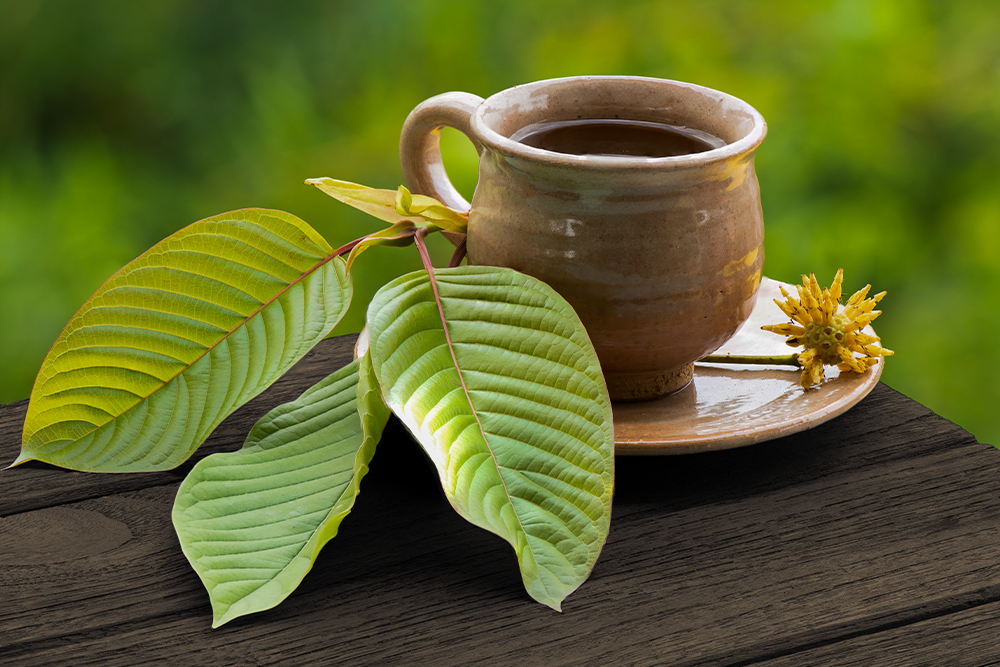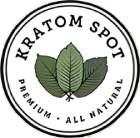
What is Kratom?
Kratom’s popularity is steadily increasing throughout the world, but many in the US still haven’t heard of it!
So just what is this thing taking the wellness community by storm? Well, you’re in the right place to find out.
What is Kratom?
Kratom is a plant that, once dried and turned into a fine powder, can be ingested for a variety of effects.
In the Southeast Asian countries it comes from, kratom has a long history of use by people from all walks of life. That said, it was likely most popular with laborers who found that its effects helped them get through long days of grueling work.
Kratom Origins: The Mitragyna Speciosa Tree
Kratom (scientific name “Mitragyna speciosa”) is a tropical evergreen tree in the coffee family. It is native to Southeast Asia — specifically Thailand, Malaysia, Indonesia, and Papua New Guinea — though the common name “kratom” comes from Thailand.
The Mitragyna speciosa plant itself can grow to a height of about 82 ft. The trunk generally grows straight and can grow to about 3 feet in diameter. The tree also has smooth, gray outer bark. Its leaves — known as “kratom leaves” — are dark green and glossy, with pronounced veins running across their body. Kratom leaves are about 5.5 to 8 inches long and about 3 to 5 inches wide when fully open. These leaves are oval in shape, narrowing to a point at one end.
But of course, the magic of kratom isn’t the plant it comes from — it’s the effects that it offers.
Alkaloids and Their Effects
Like many plants, kratom is full of natural chemicals known as alkaloids. Mitragynine and 7-hyrody-mitragynine are the two most abundant kratom alkaloids and are largely responsible for the effects you may experience.
- Mitragynine is the most abundant kratom alkaloid, making up roughly 66% of total kratom alkaloid concentration. However, this concentration varies based on several factors, including growing conditions, harvesting time, and strain of kratom. Tests on kratom samples from different strains show that mitragynine levels tend to be higher in green vein and white vein kratom strains.
- 7-hydroxymitragynine is a much rarer kratom alkaloid, making up roughly 2% of total alkaloid content. It tends to be the fourth most abundant alkaloid kratom, though its concentration varies significantly based on a number of factors. Red vein kratom strains tend to have higher than average 7-hydroxymitragynine content.
How to Use Kratom
There are many ways to take kratom, and which is best comes purely down to personal preference.
Some of the most common ways to use kratom include:
- Taking kratom powder in capsule form
- Brewing kratom into tea
- Enjoying a pre-mixed kratom beverage
- The “toss and wash” method of rinsing kratom powder down with liquid
There are many other options, but these are some of the most popular. Give them a try, and let us know what other ways you love enjoying kratom!
Kratom Legality
Kratom is legal throughout most of the United States. It helps a variety of people better their daily lives. Everyone should have access to safe, high-quality kratom products no matter where they live.
That’s not the reality of the kratom industry, however. There are many places within the U.S. where residents cannot purchase or possess kratom products. What states is kratom illegal?
- Alabama classified kratom’s primary alkaloids, mitragynine, and 7-hydroxy-mitragynine, as Schedule I narcotics in May 2016. This likens kratom to substances like ecstasy and heroin, an unjust misclassification.
- Arkansas banned kratom in February of 2016. In 2017, state medical examiners incorrectly stated that kratom’s alkaloids are derived from opium. It is unlikely we’ll see the Arkansas kratom ban lifted soon.
- Indiana outlawed kratom in 2014 but incorrectly listed the botanical as a synthetic cannabinoid. Legislature later amended their language, classifying kratom as a hallucinogenic substance, another misclassification.
- Rhode Island banned kratom’s alkaloids in 2017. Due to public outcry in other states, Rhode Island’s ban occurred in secret, confusing both residents and law officials. The state will vote on a measure to reverse the ban on September 1st, 2021.
- Vermont outlawed kratom’s alkaloids in 2016, but they were improperly classified as “synthetic drugs.” In January of 2020, lawmakers filed a bill to decriminalize kratom products, but kratom’s future is still uncertain in the state.
- Wisconsin banned kratom’s alkaloids in 2014, incorrectly associating kratom with both synthetic cannabinoids and hallucinogenic drugs. In 2019, lawmakers held informational meetings with the American Kratom Association (AKA), a step in the right direction.
Outside of these state bans, some counties have enacted their own local restrictions as well. So if you’re looking to try kratom for yourself, be sure to read-up, lest this humble botanical land you in a bit of legal heat.
Choosing Quality Kratom
Finding the best kratom vendor can be tricky, and it’s not always clear which vendors have done their due diligence with kratom lab testing. The right kratom vendor for you will clearly display that their products have been thoroughly tested.
That’s one of the main reasons that the American Kratom Association (AKA) has put in place their GMP Certification standard.
Companies that have earned this certification, such as Kratom Spot, are regularly monitored for the industry’s highest standards. These include, of course, the most crucial step: comprehensive kratom lab testing.
But the certification goes above and beyond lab testing, including:
- Exacting hygiene procedures for all equipment and personnel involved at any stage of the kratom manufacturing process.
- Use of cutting-edge machinery that minimizes kratom’s exposure to potential contaminants.
- Established and well-documented procedures to produce consistent, quality kratom from batch to batch.
- Absolute transparency regarding the origins of each batch of kratom leaf, establishing a transparent chain of possession for all raw and finished kratom materials.
- Regular audits by independent inspectors who verify the integrity, transparency, and adherence to AKA protocol of the certified vendor.
- And, of course, comprehensive, independent testing of every batch to ensure the purity, potency, and quality of the kratom, both before and after the leaf is processed into kratom powder.
Finding a GMP-certified vendor is the best way to be certain that the vendor is legitimate, has their customers’ health and safety in mind, and does everything they can to ensure safety, quality, and consistency in every kratom product.

